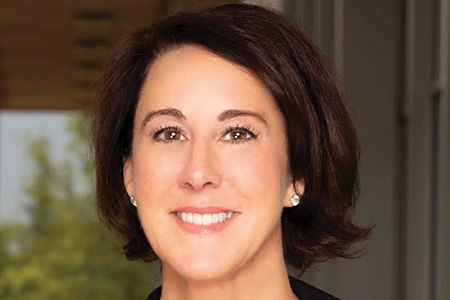How To Reduce COGS & Expedite Commercial-Scale CGT Manufacturing (Part 2)

By Erin Harris, Editor-In-Chief, Cell & Gene
Follow Me On Twitter @ErinHarris_1
As seen in Life Science Leader
Speak directly to any CGT (cell and gene therapy) executive, and you’re likely to hear about the two things that, in some way, keep them up at night when it comes to their jobs — time and cost. I asked some of the cell and gene therapy sector’s most quantifiably successful leaders, Christine (Chris) Fox, president at Novartis Gene Therapies; Karen Kozarsky, Ph.D., founder and CSO at SwanBio Therapeutics; and Vaishali Shukla, VP, quality commercial manufacturing at Kite Pharma, to weigh in on a topic that affects every CGT company — manufacturing. Here, you’ll glean a better understanding of how to drive down COGS and expedite commercial-scale manufacturing in the CGT space.
Regarding the rare disease space, what are the sector’s top challenges?
 Chris Fox: The journey of getting new therapies from lab to the rare disease patient is complex and requires a lean, agile, and integrated way of working to successfully navigate what continues to be an ever-changing landscape. That will remain our greatest challenge as an industry — how will we keep up the momentum and continue down that path? We need to balance the systemic needs of our industry with the very real need for patients with a rare disease to have treatment as quickly as possible. Continuing to bring new and innovative medicines, with the potential to have a transformative impact on a patient’s life, will be our problem to solve.
Chris Fox: The journey of getting new therapies from lab to the rare disease patient is complex and requires a lean, agile, and integrated way of working to successfully navigate what continues to be an ever-changing landscape. That will remain our greatest challenge as an industry — how will we keep up the momentum and continue down that path? We need to balance the systemic needs of our industry with the very real need for patients with a rare disease to have treatment as quickly as possible. Continuing to bring new and innovative medicines, with the potential to have a transformative impact on a patient’s life, will be our problem to solve.
What are the potential solutions or work being done to overcome these challenges in 2023 or shortly thereafter?
Chris Fox: In the short term, a few things will be critical to keeping the pace of bringing new therapies to the rare disease community. First, it’s integral that organizations continue to focus on true value-based pricing when bringing new treatments to market. Ensuring therapies are priced in line with the value they provide from a clinical, healthcare system, and societal perspective will help to shift the system’s perceptions. Second, maintaining and expanding upon existing incentives will help drug developers pursue indications that they may have overlooked in the past. Orphan exclusivity, pediatric rare disease vouchers, and an open dialogue with the FDA can all incentivize companies to identify and pursue novel development pathways for therapies.
As we look further down the road, clinical trial design innovation is an area that will continue to be beneficial. Rare diseases are often highly complex, and in some cases limited natural history exists. The more original thought we put into how to improve upon standard clinical trial design — use of biomarkers for accelerated approvals, natural history used as control arms, etc. — the faster we’ll be able to reach patients with therapies they may desperately need.
CGT manufacturing is as complex as it is critical to the life cycle of a therapy. What are some of the things the sector at large needs to get right quickly to improve/ expedite commercial manufacturing?
 Vaishali Shukla: Personalized medicine is evolving faster than ever before as more and more targets and modalities are identified to treat a myriad of diseases. These scientific breakthroughs are contributing to an innovative, fast-moving pipeline of early- and midstage assets. The sector will then have a balancing act of standardizing processes to permit scale-up at the same time as allowing flexibility to account for key differences across modalities and specific therapeutics. A big consideration comes down to expertise and people – a commercial manufacturing site is significantly more poised for success if it trains and retains specialists who understand the nuance that CGT manufacturing requires.
Vaishali Shukla: Personalized medicine is evolving faster than ever before as more and more targets and modalities are identified to treat a myriad of diseases. These scientific breakthroughs are contributing to an innovative, fast-moving pipeline of early- and midstage assets. The sector will then have a balancing act of standardizing processes to permit scale-up at the same time as allowing flexibility to account for key differences across modalities and specific therapeutics. A big consideration comes down to expertise and people – a commercial manufacturing site is significantly more poised for success if it trains and retains specialists who understand the nuance that CGT manufacturing requires.
What are some of the key manufacturing components needed to scale out autologous therapies?
Vaishali Shukla: Unlike other biologics, cell therapy manufacturing starts with an individual patient’s cell material, so the resulting batch size is inherently small. Our talent pool is among the most important manufacturing components of scaling out autologous therapies. We must have a skilled and adequate workforce to handle the individual patient batches. One additional important consideration, especially in a network with multiple global manufacturing sites, is to have consistency at scale both in processes and standards. Scaling out autologous manufacturing poses its own complexities versus traditional manufacturing, so there is a heavier focus on the use of technology/automation, process simplification and streamlining, and material optimization to enable scale-out.
Cell and gene therapy is a still a new field that evolves every day, but roadblocks remain. Provide some words of wisdom regarding the short-term future of commercial manufacturing.
 Karen Kozarsky: People are going after a lot of diseases for which gene therapy is ideally suited because it addresses the root cause of genetic disease instead of just treating the symptoms. There are many companies that are trying to address the root cause of genetic diseases for which there are largely no treatments, much less any that target the root of disease. Gene therapies can address the root cause through persistent gene expression. These therapies have the potential to actually correct the version of the malfunctioning gene. If we can get more of that gene correction into pivotal trials, we can bring these therapies to diseases beyond genetic ones. The possibilities are staggering.
Karen Kozarsky: People are going after a lot of diseases for which gene therapy is ideally suited because it addresses the root cause of genetic disease instead of just treating the symptoms. There are many companies that are trying to address the root cause of genetic diseases for which there are largely no treatments, much less any that target the root of disease. Gene therapies can address the root cause through persistent gene expression. These therapies have the potential to actually correct the version of the malfunctioning gene. If we can get more of that gene correction into pivotal trials, we can bring these therapies to diseases beyond genetic ones. The possibilities are staggering.
Vaishali Shukla: If I had to sum it all up concisely, I’d just say: “There’s much more to come!” There are thousands, if not hundreds of thousands, of individuals who are involved across all stages of drug development and manufacturing of cell and gene therapies. In manufacturing, we are proactively tuned in to our R&D counterparts to understand the future needs of novel modalities. Given how rapidly the field is progressing, if I were to give this interview in one year, I may have a completely new set of perspectives to share! It doesn’t get more exciting than that.
